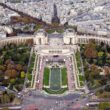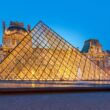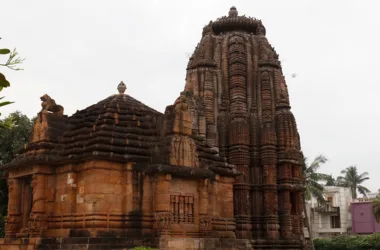The National Residence of the Invalids, located in the heart of Paris, is a monumental complex with deep historical and cultural significance. Originally built to house and care for war veterans, it now serves multiple roles, including a military museum, a church, and a mausoleum. This article delves into the rich history, architectural marvels, and modern-day relevance of this iconic French landmark.
Table of Contents
- Historical Background
- Architectural Design
- The Dome Church
- The Military Museum
- The Museum of Contemporary History
- The Army Museum
- The Cathedral of Saint-Louis des Invalides
- Notable Burials and Memorials
- The Courtyard of Honor
- Cultural and National Significance
- Visiting Information
- Events and Activities
- Preservation and Maintenance
- Conclusion
- FAQs
Historical Background
The National Residence of the Invalids was founded in 1670 by King Louis XIV. The king aimed to create a place where aged and injured soldiers could live in dignity. Completed in 1676, the residence was part of Louis XIV’s broader effort to consolidate his power and promote France’s military prowess.
Architectural Design
Designed by architect Libéral Bruant, the National Residence of the Invalids is an exemplar of French Baroque architecture. The complex features a grand façade, symmetrical layouts, and extensive gardens. Notably, Jules Hardouin-Mansart, another prominent architect, designed the Dome Church, adding to the site’s architectural grandeur.
The Dome Church
One of the most striking features of the National Residence of the Invalids is the Dome Church, or Église du Dôme. Its gilded dome, visible from various points in Paris, is a masterpiece of Baroque architecture. The church also holds the tomb of Napoleon Bonaparte, making it a significant historical and tourist attraction.
The Military Museum
The Military Museum, or Musée de l’Armée, is one of the largest collections of military history and artifacts in the world. It houses items ranging from ancient armors to modern weaponry. Highlights include Napoleon’s personal belongings, historic uniforms, and extensive displays of arms and armor.
The Museum of Contemporary History
Part of the Invalids complex, the Museum of Contemporary History offers a deep dive into modern historical events. The exhibits cover significant events from the late 19th century to the present day, providing context and understanding of France’s recent past.
The Army Museum
The Army Museum, integrated within the Invalids, presents a comprehensive overview of France’s military history. From medieval times to contemporary conflicts, the museum’s collections highlight key battles, military strategies, and the evolution of warfare.
The Cathedral of Saint-Louis des Invalides
The Cathedral of Saint-Louis des Invalides, also known as the Soldiers’ Church, is integral to the complex. Designed to serve the religious needs of the residents, the cathedral is noted for its beautiful architecture and historical artifacts, including numerous regimental flags captured by the French army.
Notable Burials and Memorials
The National Residence of the Invalids is the final resting place for many notable figures, including military leaders, ministers, and national heroes. The most famous tomb is that of Napoleon Bonaparte, whose remains were returned to France from St. Helena in 1840 and placed in a grand sarcophagus under the Dome Church.
The Courtyard of Honor
The Courtyard of Honor, or Cour d’Honneur, is the main courtyard of the Invalids. Historically used for military parades and ceremonies, it continues to host events, including state functions and commemorations. The courtyard provides a majestic setting that reflects the grandeur of the residence.
Cultural and National Significance
The National Residence of the Invalids holds a unique place in French culture and history. It symbolizes the nation’s gratitude towards its soldiers and serves as a reminder of France’s military heritage. The complex also plays a vital role in French national identity, embodying the values of honor and sacrifice.
Visiting Information
Located in the 7th arrondissement of Paris, the National Residence of the Invalids is easily accessible by public transport. Visitors can explore various parts of the complex, including museums and the Dome Church. Tickets are reasonably priced, and guided tours are available for those interested in a deeper understanding of the site.
Events and Activities
The residence hosts a range of events and activities throughout the year, including military ceremonies, exhibitions, and educational programs. Special exhibitions often provide new perspectives on historical events and figures, making each visit unique.
Preservation and Maintenance
The preservation of the National Residence of the Invalids is a priority for French heritage organizations. Continuous efforts are made to maintain the buildings and artifacts, ensuring that this historical treasure remains intact for future generations.
Conclusion
The National Residence of the Invalids is more than just a historical monument; it is a living testament to France’s rich military history and cultural heritage. Whether you are a history buff, architecture enthusiast, or curious traveler, a visit to this iconic site offers a profound and enriching experience.
FAQs
What is the National Residence of the Invalids?
The National Residence of the Invalids is a historic complex in Paris that includes museums, a church, and the tomb of Napoleon Bonaparte. It was originally built to house war veterans.
When was it built?
Construction of the National Residence of the Invalids began in 1670 and was completed in 1676.
Can the public visit the tomb of Napoleon?
Yes, the public can visit the tomb of Napoleon, located in the Dome Church within the National Residence of the Invalids.
What are the main attractions at the residence?
The main attractions include the Dome Church, the Military Museum, the Museum of Contemporary History, the Army Museum, and the Cathedral of Saint-Louis des Invalides.
Are there guided tours available?
Yes, guided tours are available and are highly recommended for those wanting a deeper understanding of the history and significance of the National Residence of the Invalids.









